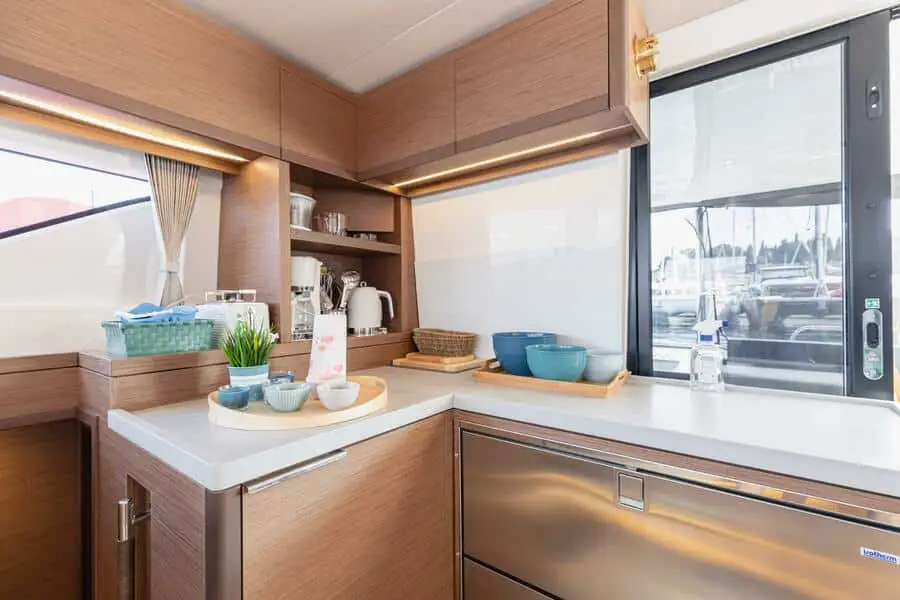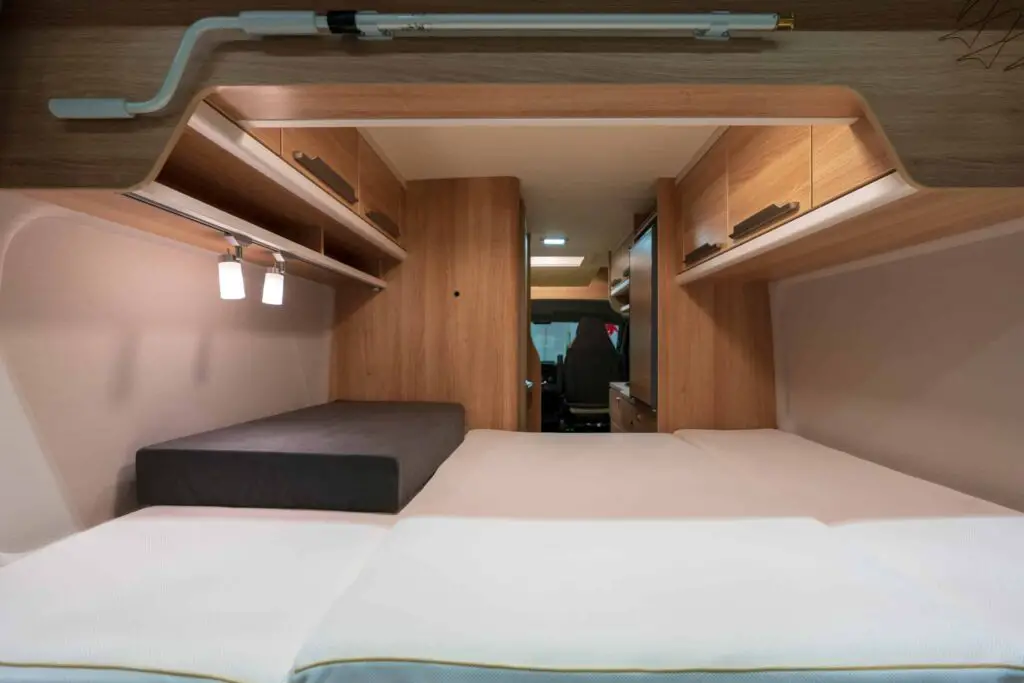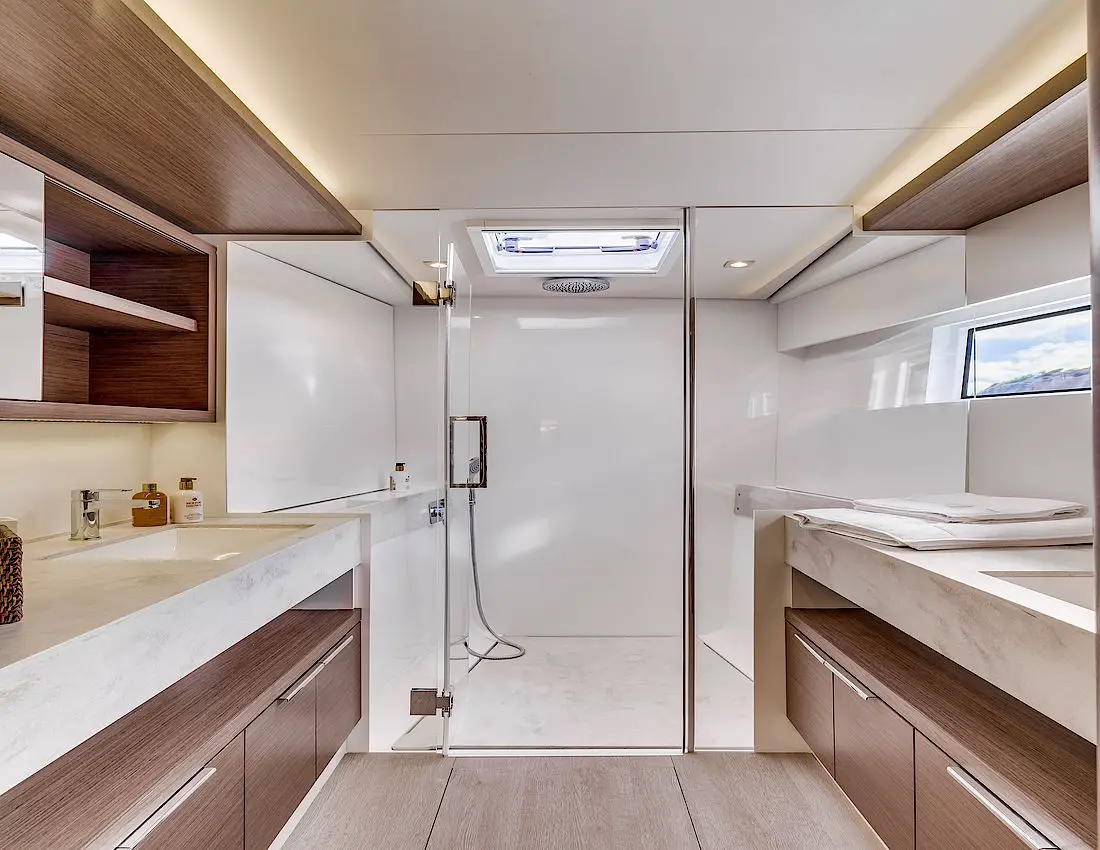What Are RV Interior Walls Made Of
Introduction
What Are RV Interior Walls Made Of: When it comes to recreational vehicles (RVs), the interior walls play a crucial role in providing both structural support and aesthetic appeal. These walls are not made of the same materials as traditional homes, as they need to be lightweight yet durable enough to withstand the rigors of travel. So, what exactly are RV interior walls made of?
In addition to laminated plywood, RV interior walls may also incorporate other materials such as fiberglass or aluminum. Fiberglass is a popular choice for RV walls due to its lightweight nature and resistance to moisture and temperature changes.
Another material that is commonly used in RV interior walls is vinyl. Vinyl is a versatile material that can be easily molded and shaped to fit the contours of an RV interior. It is often used as a decorative covering for the walls, providing a clean and modern look. Vinyl is also easy to clean and maintain, making it a practical choice for RV owners.

What is the best material to replace camper walls?
We will suggest checking out all of the options before you make a choice.
- Composite Plywood. Composite plywood is the preferred choice for many RV users and it is the most popular option on the market for RVs interior walls. …
- Vinyl.
- Medium Density Fiberboard Or MDF.
When it comes to replacing camper walls, there are several materials to consider. The best material will depend on various factors such as durability, weight, insulation, and cost. It is important to choose a material that not only meets your specific needs but also enhances the overall functionality and aesthetics of your camper.
One popular material for replacing camper walls is fiberglass. It is lightweight, which helps to reduce the overall weight of the camper, making it easier to tow. Fiberglass also offers good insulation properties, helping to keep the interior of the camper comfortable in different weather conditions. Additionally, fiberglass is resistant to moisture and rot, making it a long-lasting option for camper walls. Another material to consider is aluminum. Aluminum is lightweight and corrosion-resistant, making it a popular choice for camper walls. It is also easy to clean and maintain, which is a bonus for campers who want a low-maintenance option.
Wood is another option for replacing camper walls. It offers good insulation properties and can provide a cozy and natural aesthetic. However, wood may require more maintenance compared to other materials, as it is susceptible to rot and moisture damage. Proper sealing and regular maintenance are essential to ensure the longevity of wood camper walls.
Lastly, composite materials such as fiberglass-reinforced plastic (FRP) can be a good choice for camper walls. FRP is a lightweight and durable material that offers good insulation properties. It is resistant to moisture, rot, and corrosion, making it a long-lasting option for camper walls.
What type of insulation is in RV walls?
Fiberglass insulation
Fiberglass insulation is the most common type and comes standard in most motorhomes. It has a high R-value so it will offer great protection from unpleasant temperatures. It’s also easy to install and is one of the most inexpensive options.
When it comes to RV walls, insulation plays a crucial role in maintaining a comfortable interior temperature and reducing energy consumption. The type of insulation used in RV walls can vary depending on the manufacturer and the specific model. However, there are a few common types of insulation that are commonly found in RV walls.
One of the most popular types of insulation used in RV walls is fiberglass insulation. Fiberglass insulation is also lightweight and easy to install, making it a popular choice for RV manufacturers.
Another common type of insulation used in RV walls is foam insulation. Foam insulation is made from a variety of materials, including polyurethane and polystyrene. This type of insulation is known for its high R-value, which measures its thermal resistance. Foam insulation is also effective at reducing noise transmission, making it a popular choice for RV owners who want a quieter interior.
Some RV manufacturers also use reflective insulation in their walls. Reflective insulation consists of a layer of aluminum foil that is sandwiched between layers of other materials, such as foam or fiberglass. This type of insulation reflects radiant heat, helping to keep the interior of the RV cool in hot weather and warm in cold weather.
What material is an RV made of?
In most RVs, you’ll find that the interior layer — which includes walls and ceilings — is made up of two different materials. RV walls are usually covered in thin plywood or medium density fiberboard (MDF). In higher end or more expensive campers, you may see vinyl paneling used as well.
An RV, or recreational vehicle, is a type of motor vehicle that is designed for living accommodations. It is commonly used for camping, traveling, and other outdoor activities. RVs come in various sizes and styles, ranging from small camper vans to large motorhomes. One of the key aspects of an RV is the materials used in its construction.
The materials used in the construction of an RV can vary depending on the type and model of the vehicle.
One of the primary materials used in the construction of an RV is fiberglass. Fiberglass is a lightweight and durable material that is commonly used in the construction of the exterior walls and roof of an RV. It is resistant to water, UV rays, and other environmental factors, making it an ideal choice for outdoor vehicles.
Another material commonly used in the construction of an RV is aluminum. Aluminum is lightweight, strong, and resistant to corrosion, making it a popular choice for the framing and structure of an RV. It is also used in the construction of windows, doors, and other components of the vehicle.
In addition to these materials, RVs may also include other materials such as steel, plastic, and various composites. The specific materials used in the construction of an RV can vary depending on factors such as cost, weight, durability, and design.
Are interior camper walls structural?
Interior walls may have vital components inside of them that you’ll want to avoid damaging them. This means that even though the wall is not load bearing, it is a structural wall that needs to remain in place.
Yes, interior camper walls are indeed structural components of a camper. These walls play a crucial role in providing stability and support to the overall structure of the camper. They are not just decorative elements but are designed to bear the weight and stress of the camper’s structure.
One of the main functions of interior camper walls is to provide structural integrity to the camper. They help distribute the weight of the roof, floor, and other components evenly, preventing any excessive stress on specific areas. This structural support is essential for maintaining the overall stability and safety of the camper, especially during travel or when encountering uneven terrain.
Interior walls also serve as partitions, dividing the camper into different functional areas. They create separate spaces for sleeping, cooking, dining, and other activities, allowing for a more organized and efficient use of space. These walls also provide privacy and insulation, helping to create a comfortable living environment inside the camper.
Furthermore, interior camper walls can also contribute to the overall aesthetics and design of the camper. This allows campers to personalize their living space and create a cozy and inviting atmosphere.
How thick are most RV walls?
With all of this in mind, most RV walls are typically around 2 – 2 ½ inches thick (including the hollow, open space in between). There are some RV walls out there that are as thin as ¾”! The material forming each side of an RV wall is much thinner.
Most RV walls are typically between 1.5 to 2 inches thick. However, it is important to note that the thickness of RV walls can vary depending on the type and model of the RV. Some RVs may have walls that are slightly thinner or thicker than the average range.
The thickness of RV walls is an important factor to consider when it comes to insulation and overall durability. Thicker walls generally provide better insulation, which is crucial for maintaining a comfortable temperature inside the RV, especially during extreme weather conditions.
Insulation is essential in RV walls to prevent heat transfer and maintain a comfortable living environment.
The insulation material used in RV walls can vary, but it is typically a type of foam or fiberglass insulation. This insulation helps to regulate the temperature inside the RV and reduce energy consumption by minimizing the need for heating or cooling.
In addition to insulation, the thickness of RV walls also contributes to the overall strength and durability of the vehicle. Thicker walls are generally more resistant to damage from external forces, such as impacts or extreme weather conditions.
It is worth noting that the thickness of RV walls can also vary depending on the specific area of the vehicle. For example, the walls in the living area or bedroom may be thicker than the walls in the bathroom or kitchen. This is often due to the need for additional insulation or structural support in certain areas.
In conclusion, most RV walls are typically between 1.5 to 2 inches thick, although this can vary depending on the type and model of the RV. The thickness of RV walls is important for insulation, temperature regulation, and overall durability. Thicker walls provide better insulation and are more resistant to damage from external forces. It is also important to consider that the thickness of RV walls can vary in different areas of the vehicle.
Some of the most commonly used materials include:
1. Wood: Wood is a popular choice for RV interior walls due to its durability and versatility.
2. Fiberglass: It is lightweight, durable, and resistant to moisture, making it ideal for use in a mobile environment.
3. Vinyl: It is easy to clean, resistant to stains and moisture, and comes in a wide range of colors and patterns.
4. Aluminum: Aluminum is a popular choice for the construction of RV interior walls due to its lightweight nature and durability. It is also resistant to corrosion, making it ideal for use in outdoor environments.
Can you provide a list of the most popular options for RV interior wall materials?
When it comes to the interior walls of recreational vehicles (RVs), there are several popular options for construction materials.
1. Luan plywood: Luan plywood is a lightweight and cost-effective option that is often used as the base material for RV interior walls. It provides a smooth surface for finishing and can be easily painted or laminated.
2. Vinyl panels: Vinyl panels are a popular choice for RV interior walls due to their moisture resistance and easy maintenance. They are available in a variety of colors and patterns, allowing for customization and personalization of the RV’s interior.
3. Fiberglass reinforced panels (FRP): FRP panels are known for their durability and resistance to moisture, making them a suitable option for RV interior walls. They are easy to clean and can withstand the wear and tear of travel.
Are there any specific advantages or disadvantages associated with different types of RV interior wall materials?
When it comes to RV interior wall materials, there are several options available, each with its own set of advantages and disadvantages. One common material used in RV interior walls is wood paneling. Wood paneling provides a warm and cozy feel to the interior, giving it a more traditional and homey look. However, wood paneling can be prone to warping and damage from moisture, so it requires regular maintenance and sealing to prevent these issues.
Another popular option for RV interior walls is fiberglass. Fiberglass is lightweight, durable, and easy to clean, making it a practical choice for RV owners. It is also resistant to moisture and mold, which is a significant advantage in a small and enclosed space like an RV. However, fiberglass can be more expensive than other materials, and it may not provide the same level of insulation as other options.
Vinyl is affordable, easy to install, and resistant to moisture and stains. It is also available in a wide range of colors and patterns, allowing RV owners to customize their interior design. However, vinyl may not be as durable as other materials, and it can be prone to fading and cracking over time.
How do the interior walls of RVs differ from those found in traditional homes in terms of construction materials?
The interior walls of RVs differ from those found in traditional homes in terms of construction materials in several ways.
Common materials used for RV interior walls include plywood, particle board, and fiberglass. These materials are lightweight yet durable, making them suitable for the unique needs of RVs. In contrast, traditional homes often have interior walls made of heavier materials such as drywall or plaster.
Another difference is that RV interior walls may have additional insulation to improve energy efficiency and temperature control. Traditional homes may also have insulation in their walls, but it is typically more extensive and designed for long-term living rather than the mobility of an RV.
Are there any specific considerations or maintenance requirements for maintaining the interior walls of an RV?
When it comes to maintaining the interior walls of an RV, there are a few specific considerations and maintenance requirements to keep in mind. Firstly, it’s important to regularly clean the walls to prevent the buildup of dirt, dust, and grime.
Additionally, it’s crucial to avoid using abrasive cleaners or scrub brushes that could damage the walls. Instead, opt for soft cloths or sponges to gently clean the surfaces. It’s also important to be mindful of any moisture or water leaks that could potentially damage the walls. Regularly inspecting the RV for any signs of leaks and promptly addressing them can help prevent any water damage to the interior walls.
Another important consideration is to be cautious with any adhesive materials or decorations that are applied to the walls. Some adhesives or tapes can leave residue or damage the walls when removed. Lastly, it’s a good idea to periodically inspect the walls for any signs of wear or damage, such as cracks or peeling paint. Addressing these issues promptly can help prevent further damage and maintain the overall integrity of the interior walls of your RV.

Conclusion
RV interior walls are typically made of a variety of materials that are chosen for their durability, weight, and aesthetic appeal. These materials include wood, fiberglass, aluminum, and vinyl. Each material has its own advantages and disadvantages, and the choice of material will depend on the specific needs and preferences of the RV owner.
Wood is a popular choice for RV interior walls because it is lightweight, easy to work with, and provides a natural and warm look. However, wood may require regular maintenance to prevent warping or rotting, especially in areas with high humidity or moisture.
It is also fire-resistant, making it a safe choice for RVs. It is also available in a wide range of colors and patterns, allowing for customization and personalization.
The choice of material for RV interior walls meterial will depend on factors such as durability, weight, maintenance requirements, and aesthetic preferences. RV owners should carefully consider their needs and preferences when selecting the material for their interior walls to ensure a comfortable and functional living space.








